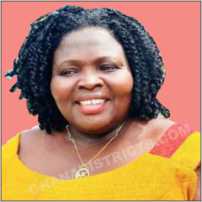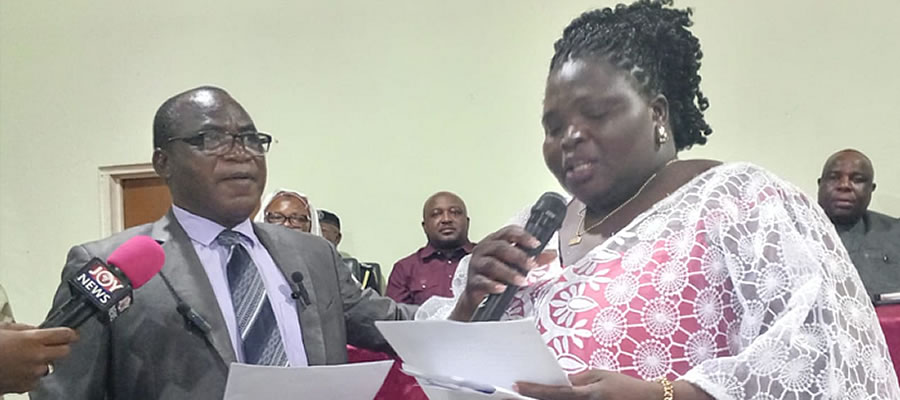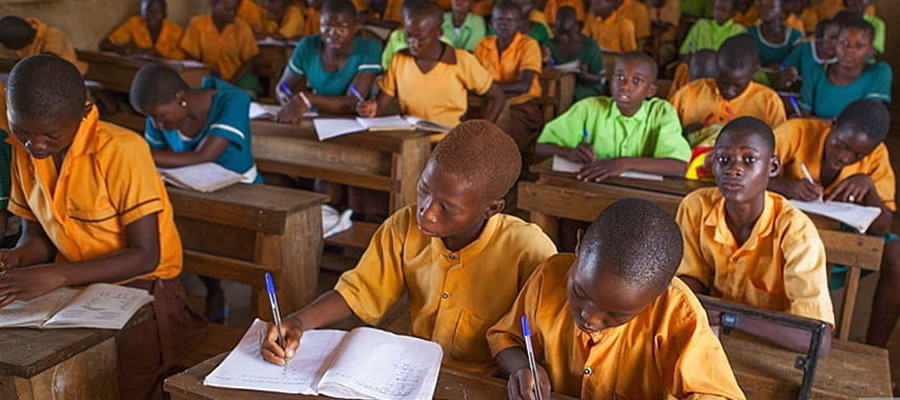

Introduction
Population composition is the description of a population according to characteristics such as age, sex, marital status, ethnicity, education and occupation. Population size, composition and age-sex structures are critical in understanding the components of population dynamics that is fertility, mortality and migration of any country. The age-sex structures are useful for population projections.
A country’s population composition, for example, greatly influences its needs and wellbeing. The objective of this chapter is to analyse the population size and distribution, age-sex structure, migration, fertility and mortality in the Nadowli-Kaleo District’s population based on the 2010 Population and Housing Census.
The district has two major ethnic groups, the Dagaabas and the Sissalas. Other tribes of Northern and Southern origins are also resident in the district. There are three main religions in the District. Christianity (comprising Catholics, Protestants, Pentecostal/Charismatic, and other denominations) leads with 68.8 percent followed by Islam (17.0%) and traditional religion (9.9%).
Population Size and Distribution
According to the 2010 population and Housing Census, the District has a total population of (61,561). Going by the international standard for the definition of an urban settlement, for the 2010 population and Housing Census which defines an urban community as any community with a population of 5,000 or more none of the communities in the Nadowli-Kaleo District has attained an urban status.
Table 2.1 shows population by age, sex and type of locality in the Nadowli-Kaleo District. With a total population of (61,561) distributed across all ages and different sexes, the total population has (28,753) males and (32,808) female representing 46.71 percent 53.29 percent respectively. Out of the total population, persons between the ages of 10-14 years with population of (8,592) constitute the highest proportion (14.0%) of the total population than any other age group. It means that there were more children born in the past 10-14 years than the number born in the past 0-9 years. The number of persons found between the ages of 95-99 is the least, constituting only (0.1%) of the total population.
Sex ratio
Sex ratio, which is a measure of the number of males per every 100 females in the population, stands at 87.6 for the district. This indicates that the total population has a higher number of females than males. However, it varies from one age group to the other. The highest sex ratio (109.6) is found in the age group, 10-14. Other age groups that have sex ratios greater than 100 were 0-4, 10-14, 15-19 and 20-24 years.
The age and sex distribution of the population has some implications for socio-economic and demographic development as well as for labour force and gender related activities in the district.
Age and Sex Structure
Figure 2.1 is a population pyramid which illustrates the age-sex structure of the district. The district has a relatively high proportion of its population within the youthful ages 0-24 years (60.1%). This is demonstrated by a population pyramid with a broad base and a narrow top which gives it a conical shape (Figure 2.1). For instance, out of the total population of the district, persons between the ages of 0-24 years alone constituted 60.1 percent. The pyramid also shows that there is no significant difference in the percentage composition of males from age group 5-9 to 0-4 years, compared to that for females.
The age structure affects general fertility rate and ultimately the nature of changes that are likely to occur in the population. Birth and death rates are influenced by the proportions of people in the different ages. The population aged 10-14 recorded the highest proportion of the district’s population of 14.0 percent followed by those within the age bracket 5-8 with 13.8 percent and those within the age cohort 0-4 comes next with 12.7 percent.
Generally for both male and female populations starting from age 10-14, every successive higher age cohort recorded a lower population compared with the figure for the previous age cohorts except for the age cohorts 60-64 and 70-74 which recorded a marginally higher figures than the previous age cohorts. The population reduces until the least figure is recorded by age group 90 and above.
The age structure affects general fertility rate and ultimately the nature of changes that are likely to occur in the population. Birth and death rates are influenced by the proportions of people in the different ages. Other things being equal, populations that have comparatively large numbers of elderly are likely to record more deaths and fewer births each year than population of equal size that is made of a large proportion of young people within the reproductive ages.
Fertility, Mortality and Migration
Fertility
Fertility refers to the actual birth performance i.e. frequency of childbearing among a population and the 2010 Population and Housing Census (PHC) collected both current and lifetime fertility data from females aged 12 years and older. Total fertility rate (TFR) is the average number of children a woman will have given birth to by the end of her reproductive years at the prevailing age-specific fertility rate.
Table 2.2 shows reported Total Fertility Rate, General Fertility Rate and Crude Birth Rate by district in Upper West region. Table 2.2 shows that the TFR for the District is 3.2. There are other fertility measures such as crude birth rate (CBR) and general fertility rate (GFR). The crude birth rate (CBR) is defined as the number of births in a given year divided by the 19
population in the middle of that year. The general fertility rate (GFR) is the number of births in a given year divided by the mid-year population of women in the age group 15-49. The CBR and GFR for the District is 20.1 and 85.8 respectively. Sissala West and Lambussie- Karni districts recorded the highest (28.2) and lowest (25.9) CBR respectively. Sissala West again recorded the highest GFR (124.0) while Lawra recorded the lowest GFR (81.8).
Children ever born and surviving
Table 2.3 presents female population 12 years and older by age, children ever born and children surviving in Nadowli-Kaleo District. Table 2.3 indicates that there were 22,823 females 12 years and older who have given birth to a total of 75,574 children as captured by the 2010 PHC. The age group 60+ has the highest proportion (17.4%) of females aged 12 years and older. The age group 60+ has the largest proportion of children ever born (25,759; 34.1%) while females aged 12-14 years gave birth to 16 children, this figure is insignificant (0.0%) compared to children ever born to all females aged 12 years and older in the district.
Mortality
Mortality is another component of population dynamics. The 2010 PHC measured mortality rate on the responses to questions on “births and deaths in the last 12 months”. Table 2.4 presents the computed crude death rates by districts in the Upper West Region. The crude death rate for the Nadowli-Kaleo District was 11.9 deaths per 1,000 people in the year preceding the census. The district recorded the CDR of 11.9 which is higher than the regional figure of 9 deaths per 1,000 people.
Causes of death
The census also solicited data on specific causes of the deaths that occurred during the year 2010 and these have been categorized into two. As indicated in Table 2.5, deaths were either categorized as due to accident/violence/homicide and suicide which are human related causes of deaths or all other causes which include diseases and pregnancy related or natural causes. In the Nadowli/Kaleo District, 94.4 percent of all deaths that occurred are caused by other 21
factors other than human causes such as accident/violence/homicide or suicide. Specifically, the district had 5.6 percent of all deaths occurring as a result of accident/violence/homicide or suicide which is lower than the regional figure (6.6%).
Age specific mortality rate
Age specific death rates are calculated for specific age groups in order to compare mortality at different ages or at the same age over time. The age specific death rate is computed as a ratio of deaths of people in a specified age group, for example deaths among the under-five year-age group to the population in that age group (less than five years) multiplied by 1,000. The age specific death rates for various age groups of the district are presented in figure 2.2. It is observed that the death rate for males of all age groups was always higher than that for female except the age groups 15-19, 20-24 and 25-29.
Even though both rates started to decrease from age five and older, that for males decreased more sharply than the rate for females, bringing them to almost equal level between ages 10-14 years and 15-19 years. Between the ages of 10-14, 45-49 and 55-59 years also, the lowest death rates (almost close to zero) were recorded for both males and females. There was a sharp increase in death rates for males from 25-29, 30-34, 35-39 and 40-44 years age group but falls to the lowest death rate almost close to zero at age group 45-49 years. The highest death rates for both males and females were recorded among persons aged 55-59, 60-64, 65-69 and 70+ years and older, but the rate for males was higher than that of females.
Migration
Migration is defined as a geographical movement involving a change from a usual place of residence over a defined territory beyond a defined period (United Nations, 2012). Birthplace and migratory patterns are analysed by comparing locality of birth with locality of enumeration to provide an indication of migratory movements. There is seasonal emigration by the youth especially males to the south to work thereby reducing the labour force while there is also intra-district migration from the west to the fertile east to farm.
Table 2.6 shows birth place by duration of residence of migrants in the Nadowli/Kaleo District.
Out of a total of 11,730 migrants, 61.4 percent constitutes those born elsewhere in the region. Amongst migrants born elsewhere in another region Northern recorded the highest (9.0%), followed by Ashanti region (8.9%) and Volta recording the lowest proportion (0.6%). For birthplace by duration of residence of migrants, Ashanti region recorded the highest migrants with duration of residence throughout all the years and Western recorded the lowest. Migrants born outside Ghana in the district constitutes 237 with duration 1-4 years of residence being highest 27.4 percent and the lowest being 10-19 years of duration of residence constituting 14.8 percent.
Date Created : 4/11/2018 4:34:18 AM












 facebook
facebook
 twitter
twitter
 Youtube
Youtube
 +233 593 831 280
+233 593 831 280 0800 430 430
0800 430 430 GPS: GE-231-4383
GPS: GE-231-4383 info@ghanadistricts.com
info@ghanadistricts.com Box GP1044, Accra, Ghana
Box GP1044, Accra, Ghana